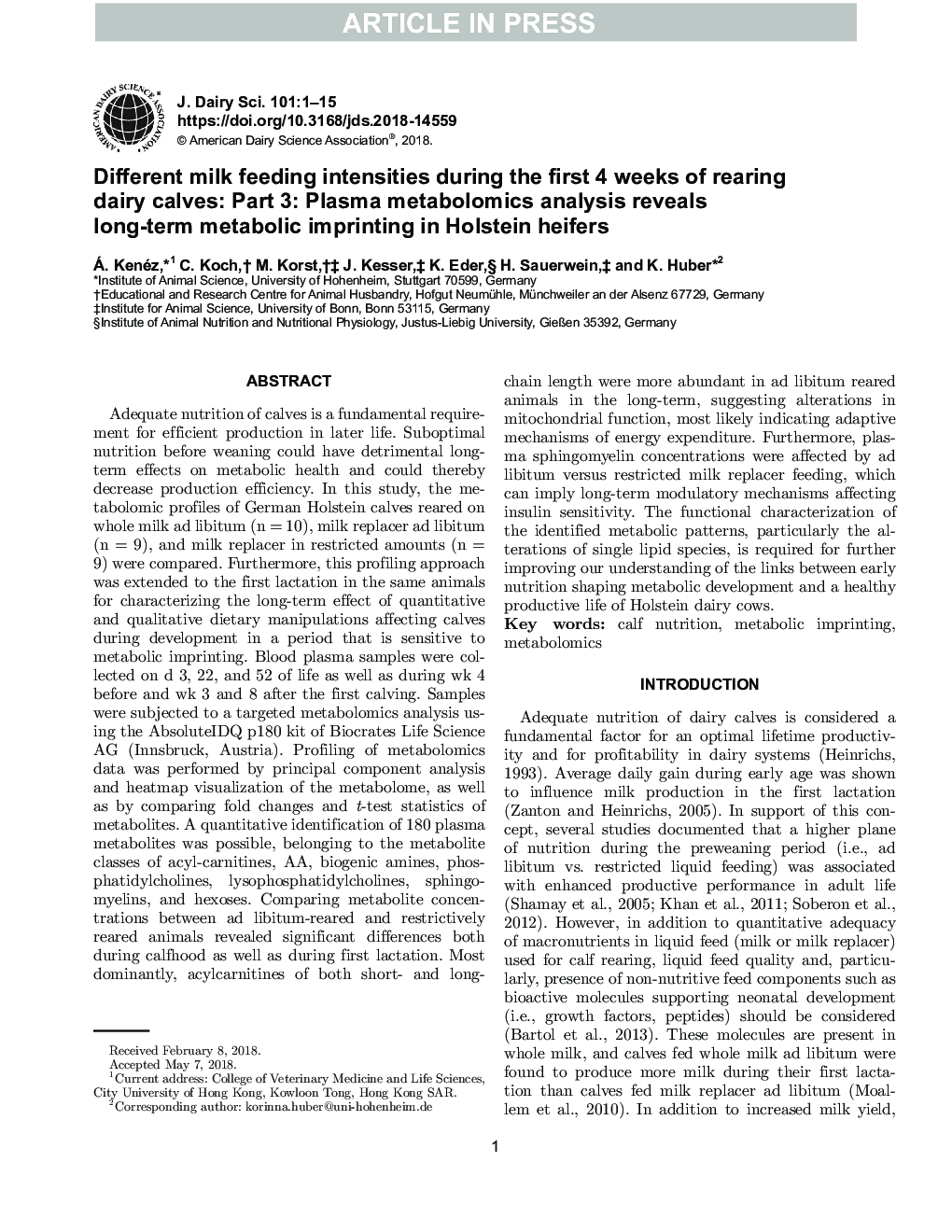| کد مقاله | کد نشریه | سال انتشار | مقاله انگلیسی | نسخه تمام متن |
|---|---|---|---|---|
| 8956500 | 1646155 | 2018 | 15 صفحه PDF | دانلود رایگان |
عنوان انگلیسی مقاله ISI
Different milk feeding intensities during the first 4 weeks of rearing dairy calves: Part 3: Plasma metabolomics analysis reveals long-term metabolic imprinting in Holstein heifers
ترجمه فارسی عنوان
تنش های مختلف شیر تغذیه در طی 4 هفته اول تولید گوساله های شیری: قسمت 3: تجزیه و تحلیل متابولوماتیک پلاسما نشان دهنده اثرات متابولیکی طولانی مدت در تلیسه های هلشتاین
دانلود مقاله + سفارش ترجمه
دانلود مقاله ISI انگلیسی
رایگان برای ایرانیان
کلمات کلیدی
تغذیه گوساله، واردات متابولیک، متابولومیکس
موضوعات مرتبط
علوم زیستی و بیوفناوری
علوم کشاورزی و بیولوژیک
علوم دامی و جانورشناسی
چکیده انگلیسی
Adequate nutrition of calves is a fundamental requirement for efficient production in later life. Suboptimal nutrition before weaning could have detrimental long-term effects on metabolic health and could thereby decrease production efficiency. In this study, the metabolomic profiles of German Holstein calves reared on whole milk ad libitum (n = 10), milk replacer ad libitum (n = 9), and milk replacer in restricted amounts (n = 9) were compared. Furthermore, this profiling approach was extended to the first lactation in the same animals for characterizing the long-term effect of quantitative and qualitative dietary manipulations affecting calves during development in a period that is sensitive to metabolic imprinting. Blood plasma samples were collected on d 3, 22, and 52 of life as well as during wk 4 before and wk 3 and 8 after the first calving. Samples were subjected to a targeted metabolomics analysis using the AbsoluteIDQ p180 kit of Biocrates Life Science AG (Innsbruck, Austria). Profiling of metabolomics data was performed by principal component analysis and heatmap visualization of the metabolome, as well as by comparing fold changes and t-test statistics of metabolites. A quantitative identification of 180 plasma metabolites was possible, belonging to the metabolite classes of acyl-carnitines, AA, biogenic amines, phosphatidylcholines, lysophosphatidylcholines, sphingomyelins, and hexoses. Comparing metabolite concentrations between ad libitum-reared and restrictively reared animals revealed significant differences both during calfhood as well as during first lactation. Most dominantly, acylcarnitines of both short- and long-chain length were more abundant in ad libitum reared animals in the long-term, suggesting alterations in mitochondrial function, most likely indicating adaptive mechanisms of energy expenditure. Furthermore, plasma sphingomyelin concentrations were affected by ad libitum versus restricted milk replacer feeding, which can imply long-term modulatory mechanisms affecting insulin sensitivity. The functional characterization of the identified metabolic patterns, particularly the alterations of single lipid species, is required for further improving our understanding of the links between early nutrition shaping metabolic development and a healthy productive life of Holstein dairy cows.
ناشر
Database: Elsevier - ScienceDirect (ساینس دایرکت)
Journal: Journal of Dairy Science - Volume 101, Issue 9, September 2018, Pages 8446-8460
Journal: Journal of Dairy Science - Volume 101, Issue 9, September 2018, Pages 8446-8460
نویسندگان
Á. Kenéz, C. Koch, M. Korst, J. Kesser, K. Eder, H. Sauerwein, K. Huber,
